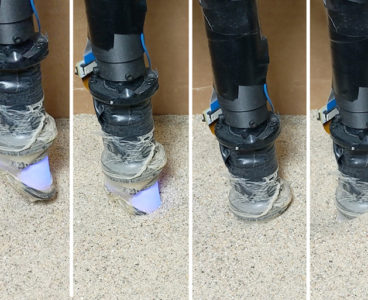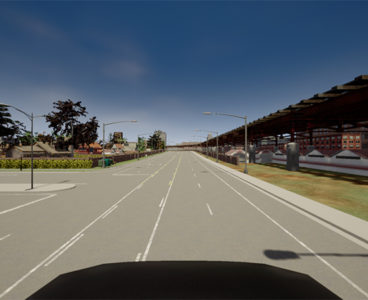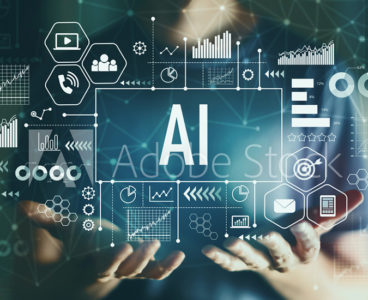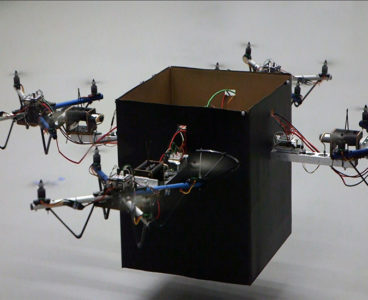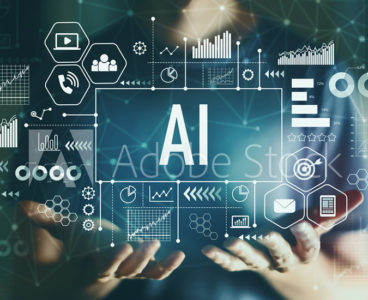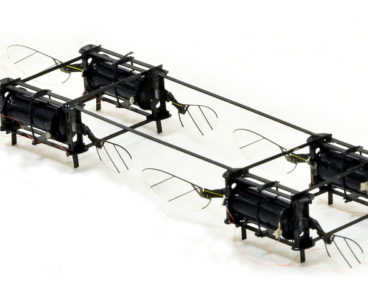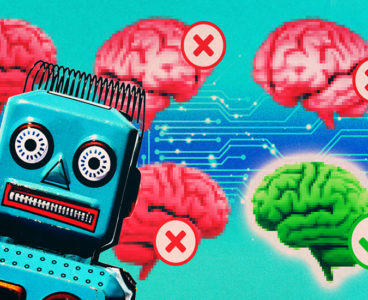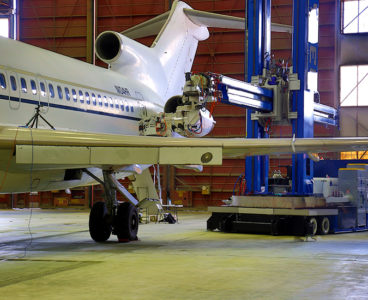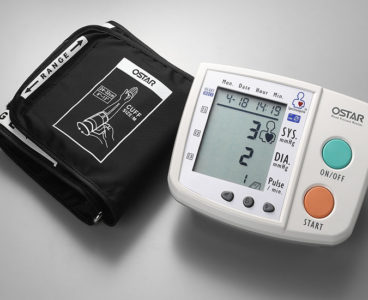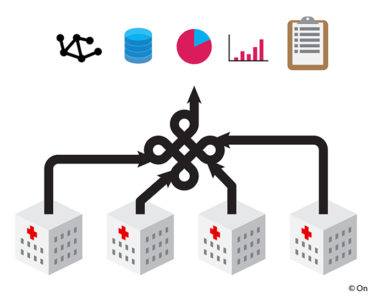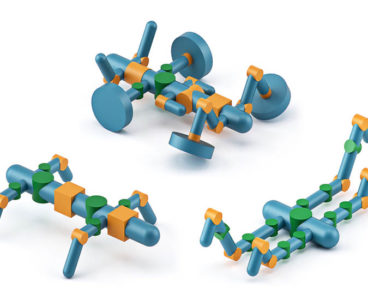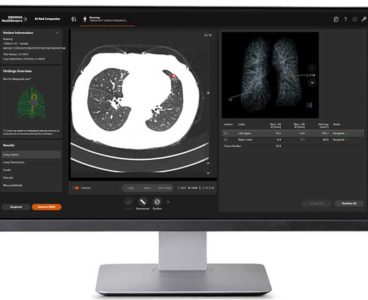From ACS Applied Materials & Interfaces Small pieces of plastic are everywhere, stretching from urban environments to pristine wilderness. Left to their own devices, it can take hundreds of years for them to degrade completely. Catalysts activated by sunlight could speed up the process but getting these compounds to interact with microplastics is difficult. In…
The Biden administration launches the National Artificial Intelligence Research Resource Task Force
The U.S. National Science Foundation and the White House Office of Science and Technology Policy have announced the formation of the National Artificial Intelligence Research Resource Task Force. As directed by Congress in the “National AI Initiative Act of 2020,” the task force will serve as a federal advisory committee, developing an implementation roadmap for…
Slender robotic finger senses buried items
By Daniel Ackerman | MIT News Office Over the years, robots have gotten quite good at identifying objects — as long as they’re out in the open. Discerning buried items in granular material like sand is a taller order. To do that, a robot would need fingers that were slender enough to penetrate the sand,…
ORNL licenses revolutionary AI system to General Motors for automotive use
By Coury Turczyn The Department of Energy’s Oak Ridge National Laboratory has licensed its award-winning artificial intelligence software system, the Multinode Evolutionary Neural Networks for Deep Learning, to General Motors for use in vehicle technology and design. The AI system, known as MENNDL, uses evolution to design optimal convolutional neural networks – algorithms used by…
SciBite launches AI-driven semantic search platform to help manage the life science data deluge
SciBite, an Elsevier company, has announced the launch of SciBiteSearch. The next-generation scientific search and analytics platform offers powerful interrogation and analysis capabilities across unstructured and structured data, from public and proprietary sources. Researchers today face increasing challenges around accessing and deriving meaningful insights from the ever-larger volumes of data, presented in an array of formats…
Control system helps several drones team up to deliver heavy packages
By John Toon, Georgia Institute of Technology Many parcel delivery drones of the future are expected to handle packages weighing five pounds or less, a restriction that would allow small, standardized UAVs to handle a large percentage of the deliveries now done by ground vehicles. But will that relegate heavier packages to slower delivery by…
Survey finds 62% of life science professionals say AI will lead to faster R&D, but is held back by skills gap and data bias
The Pistoia Alliance, a global, not-for-profit alliance that works to lower barriers to innovation in life science and healthcare R&D, has this week announced the results of a survey of life science professionals, on the implementation of AI and blockchain in the life sciences industry. The survey shows there is a high level of interest…
What is artificial intelligence (AI)?
When computers display the type of intelligence that humans and animals possess, this is known as artificial intelligence (AI). Intelligence involves perceiving the environment and using this information to take actions that maximize the likelihood of achieving objectives. Specific AI capabilities include learning, perception, reasoning, planning, knowledge representation and natural language processing. Ultimately, it is…
What is deep learning?
A form of machine learning that excels at pattern recognition Deep learning is a form of artificial neural network used for machine learning. This is a way of storing and processing information that is very different to conventional computers. Deep learning allows a computer to learn a task without a human first defining the algorithm,…
Researchers introduce a new generation of tiny, agile drones
By Daniel Ackerman | MIT News Office If you’ve ever swatted a mosquito away from your face, only to have it return again (and again and again), you know that insects can be remarkably acrobatic and resilient in flight. Those traits help them navigate the aerial world, with all of its wind gusts, obstacles and…
ScienceLogic raises $105M in new financing to accelerate leadership in growing AIOps market
ScienceLogic, a provider of AI-driven monitoring solutions for hybrid cloud management, announced today that it has raised $105 million in growth financing. Silver Lake Waterman led the company’s Series E round with participation from existing investors Goldman Sachs, Intel Capital and NewView Capital. The investment will support the company’s continued innovation in the AIOps market…
A machine-learning approach to finding treatment options for Covid-19
Written by Daniel Ackerman, MIT News Office When the Covid-19 pandemic struck in early 2020, doctors and researchers rushed to find effective treatments. There was little time to spare. “Making new drugs takes forever,” says Caroline Uhler, a computational biologist in MIT’s Department of Electrical Engineering and Computer Science and the Institute for Data, Systems…
Digital innovation is unlocking new pharmaceutical and chemical research horizons, according to MIT Technology Review Insights
“Transforming R&D: Digital innovation in the pharmaceuticals and chemicals industries,” a new report by MIT Technology Review Insights, explores how leading pharmaceuticals and chemicals companies are using artificial intelligence, quantum computing and other digital technologies to transform scientific research and enhance R&D performance. The report, produced in association with PerkinElmer Informatics, is based on in-depth interviews…
Designing customized “brains” for robots
Written by Daniel Ackerman, MIT News Office Contemporary robots can move quickly. “The motors are fast, and they’re powerful,” says Sabrina Neuman. Yet in complex situations, like interactions with people, robots often don’t move quickly. “The hang up is what’s going on in the robot’s head,” she adds. Perceiving stimuli and calculating a response takes…
Argonne National Laboratory to offer free webinar: Accelerating Scale-up with AI
Accelerating Scale-up with AI Thursday, January 28, 2021 • 2:00 p.m. – 4:00 p.m. CT Rapid advances in energy technologies have been enabled in part by innovative, high-performance materials. To keep the U.S. competitive in energy materials manufacturing, there is an intensifying need to bring new materials out of the laboratory and into commercial production faster…
AI-powered microscope could check cancer margins in minutes
A new microscope from researchers at Rice University and the University of Texas MD Anderson Cancer Center can rapidly image large tissue sections, potentially during surgery, to discover on the spot if the cancer was successfully removed. It was created by engineers and applied physicists at Rice and is described in a study recently published…
R&D 100 winner of the day: Laser Coating Removal Robot (LCR robot)
The Laser Coating Removal Robot (LCR robot), developed by Southwest Research Institute, is the only known solution for commercial and cargo-sized robotic coating removal in the world that is capable of removing the full range of aircraft coatings (all colors and clearcoat). There are no other comparable laser coating removal solutions. The LCR uses the…
R&D winner of the day: Artificial intelligence early warning heart disease technology
OSTAR Artificial intelligence early warning heart disease technology discovers abnormal heart conditions and diagnoses cardiac disease in advance. Their new AI algorithm uses BPM/ECG transform spectrum diagram to detect the most common and dangerous types of heart disease. The AI technology is able to prevent and warn potential heart disease patients and also track them,…
New technology takes users from quantum dot to manufacturing in less than an hour
Artificial Chemist 2.0 is a new technology that allows users to go from requesting a custom quantum dot to completing the relevant R&D and beginning manufacturing in less than an hour. The technology is completely autonomous and uses artificial intelligence (AI) and automated robotic systems to perform multi-step chemical synthesis and analysis. Quantum dots are…
trinamiX to present nolecular sensing technology for use in mobile devices at Snapdragon Tech Summit Digital 2020
trinamiX, developer of 3D and infrared sensing solutions and a subsidiary of BASF, announced its vision to bring Near-Infrared Spectroscopy into smartphones based on Qualcomm Snapdragon mobile platforms at the Snapdragon Tech Summit Digital 2020. trinamiX’s sensing technology will empower end consumers to identify the molecular composition of material enabling them to optimize their decision…
Artificial intelligence collaboration seeking to hasten COVID-19 insights
During the COVID-19 pandemic, health care professionals and researchers have been confined mostly to using local and national datasets to study the impact of comorbidities (chronic or long-term health conditions), pre-existing medication use, demographics and various interventions on disease course. Now, Purdue University is joining with other organizations for an initiative to accelerate global collaborative…
Computer-aided creativity in robot design
R&D winner of the day: AI-Rad Companion Chest CT
The Siemens Healthineers AI-Rad Companion Chest CT is a software assistant bringing artificial intelligence (AI) to help interpret computed tomography (CT) images. The AI-Rad Companion Chest CT is composed of three modules: Pulmonary, Cardiovascular and Musculoskeletal. The Pulmonary module offers an assessment of the lungs and airways, while the Cardiovascular and Musculoskeletal modules assess the…
System brings deep learning to “internet of things” devices
Written by Daniel Ackerman Deep learning is everywhere. This branch of artificial intelligence curates your social media and serves your Google search results. Soon, deep learning could also check your vitals or set your thermostat. MIT researchers have developed a system that could bring deep learning neural networks to new — and much smaller —…
SwRI receives $7.2 million contract to test AI in air taxi design project
Southwest Research Institute has received a four-year, $7,239,342 contract from the U.S. Department of Defense’s Defense Advanced Research Project Agency (DARPA) to develop air taxi technology to test the design capabilities of artificial intelligence-augmented design systems. The project is part of DARPA’s Symbiotic Design for Cyber Physical Systems program. Air taxis are short-range electric aircraft…


